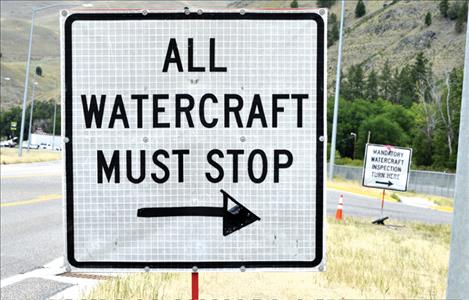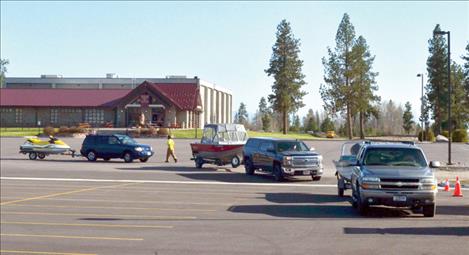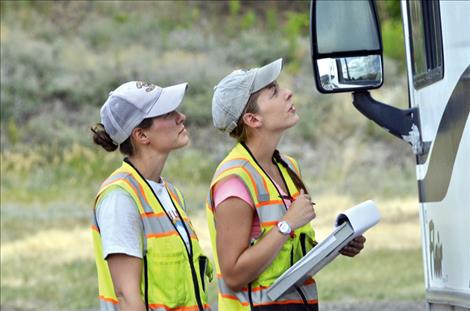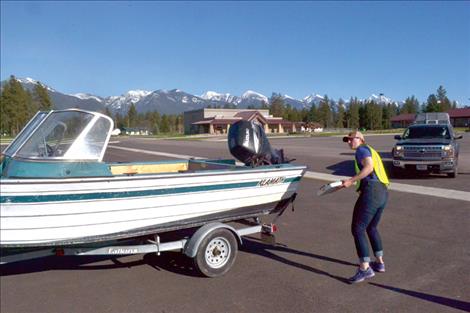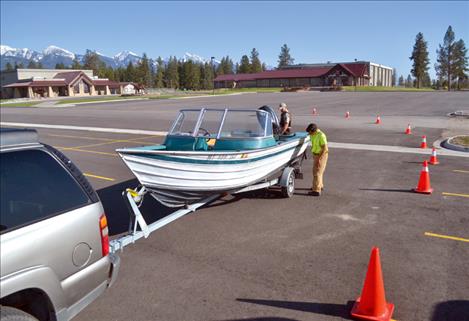Pounds of Prevention
State agency unveils mussel response plan, seeks $10M from Legislature
Hey savvy news reader! Thanks for choosing local.
You are now reading
1 of 3 free articles.
POLSON – Doubling the number of watercraft inspection stations is just one part of a multi-pronged effort planned by Montana Fish, Wildlife and Parks as it attempts to prevent mussel infestations across the state.
Adding 17 water inspection stations to the 17 the state had last year is one part of the response plan after mussel larvae were found in the Tiber Reservoir north of Great Falls last year. (One larva was found in Canyon Ferry Reservoir east of Helena.) The number of days and hours the stations are opened would be expanded and start sometime in April and run through October.
Randy Arnold, a regional supervisor with the state agency, addressed the Flathead Basin Commission on Thursday, Feb. 2, and outlined the plan, which he hopes to begin implementing by April 14.
Arnold said the agency has rule-making authority to implement the proposals, but needs the Legislature to fund the effort and allocate funds to specific areas.
“My sense is we are going to stand up one of the most robust anti-AIS programs in the western U.S.,” he said following his presentation about aquatic invasive species at the Lake County courthouse.
The Legislature is being asked to fund the plan through a group of proposals, although he couldn’t specifically identify them at this time. The state has been spending around $2 million every two years for AIS prevention, and Arnold said the plan would require about $10 million every two years.
The plan, which was released on Jan. 16, proposes that any watercraft coming from outside the state would be required to be inspected prior to launch in Montana, and watercraft crossing the Continental Divide from the east (where the mussel larvae were found) to the west would require an inspection. Watercraft includes motorized and non-motorized, including paddleboards, wakeboards, canoes and kayaks.
Four decontamination stations would be set up at the Tiber and Canyon Ferry reservoirs under the plan. That portion of the plan would cost $2.4 million. It would mean that one couldn’t launch a boat unless it goes through a decontamination, Arnold said.
Expanding watercraft inspections would run $5.8 million, while expanding the state’s AIS monitoring program would cost $673,784.
Strengthening management of the AIS program is pegged at $585,754. The latter would include production of information and programs, education and outreach.
The effort involves raising awareness of the proposed state regulations once they are implemented so that people comply, he said.
Responding to questions from Flathead Basin commissioners about signs and inspection stations at Montana’s eastern border, Arnold said the state will be putting up some signage, but there are too many roads in the east that one could use to get to Tiber and Canyon Ferry to make inspection stations on them practical at this time.
“The onus is on the boater to get inspected before launch,” he said, noting there will be signs posted at state entry points and lakes.
Flathead Basin Commission Chairman Tom Smith said the boating season starts in March. “Things aren’t looking really good for having that (necessary) level of priority in place,” he said.
Arnold said the state can put a rule in place prior to April 14, but may not be able to implement it logistically if the funds aren’t there.
Fish, Wildlife and Parks can respond to situations on the ground with emergency rules that last for 120 days, Arnold said.
He noted that the state agency has 70 field wardens across the state who will be stepping up enforcement in regard to AIS in the short term. The penalty for not getting an inspection sticker, for example, is a maximum $500 fine along with some jail time, which would be determined by a judge.
Commissioner Chas Cartwright asked about aggressive gating of boat ramps on the Missouri River, but Arnold was doubtful about that. “The challenge is: what gate and where?” he said, adding that Fish, Wildlife and Parks staff is going to be stretched this summer. “There’s going to be a lot of change,” he said.
“Gates help keep people honest,” Flathead Basin Commission Executive Director Caryn Miske said. “Leaving it open is inviting them” to break the law, she said, noting that gating is used successfully around Lake Tahoe.
“It’s not considered immoral for Montanans to access what they consider public property,” Lake County Commissioner Dave Stipe said.
“Gating would quickly become a controversial issue,” Arnold added.
Miske requested Fish, Wildlife and Parks lobby for a pilot program in the Flathead Basin that requires all boaters to be inspected prior to launch. This would be similar, but not as stringent, as what is currently set up on the Blackfeet Reservation, she said.
It was noted that Idaho requires an invasive species sticker on boats and watercraft with the purchase price helping fund its boat inspection program.
Arnold said Fish, Wildlife and Parks may not get all of the funding it is requesting and is looking for federal grant funds but as yet has been unsuccessful.
In the meantime, Smith said the Flathead Lake Biological Station is waiting on the results of 117 samples that were done last year.
To view the plan, go online to fwp.mt.gov, scroll down to What’s Trending, Popular and click on Montana Mussel Response.
The state agency will be taking public comment on the proposal sometime between now and April 14, Arnold said.
















